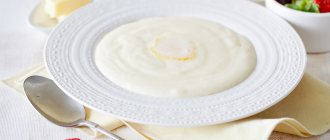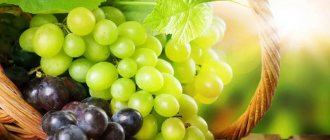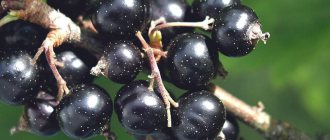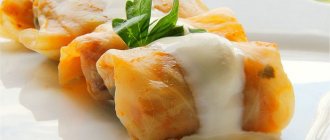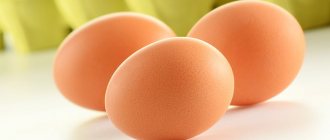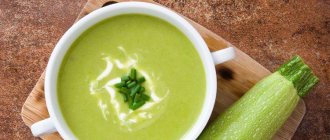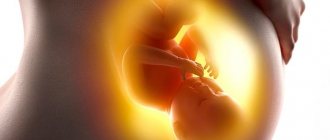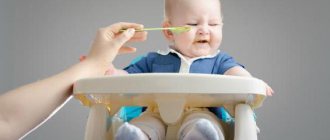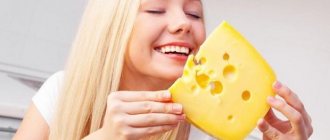Before pregnancy, many women loved to treat themselves to something tasty and sweet. Each had their own preferences when choosing treats. Some preferred to eat sushi with sweet tea, while others liked to eat higher-calorie sweets. Naturally, after the birth of a baby, a woman’s body simply requires fast carbohydrates to restore strength and energy. Therefore, it is not surprising that nursing mothers are drawn to sweets, especially during this period.
However, it is important not to forget: some types of sweets (baked goods are no exception to this rule) can be harmful to the body during breastfeeding. You need to choose treats with extreme caution. In this case, women can opt for drying. They can harm your figure less than cakes with whipped cream or chocolates. But how exactly can a new mother be sure that drying cannot harm the baby’s health through breast milk? And how many dry foods are women allowed to eat during breastfeeding throughout the day?
Is it possible to eat crackers while breastfeeding?
Is it possible for a nursing mother to eat flour during breastfeeding?
Some types of flour products not only can, but also should be consumed during breastfeeding (for example, bread and crackers), because they contain a lot of nutrients. However, they should be present in the diet in strictly limited quantities (preferably without the addition of milk, margarine, eggs, yeast and with a minimum sugar content).
From what month should it be included in the diet?
Lenten baked goods can be gradually introduced into the diet in the first month of breastfeeding. As for other foods (high in fat and sugar), you should wait until the baby’s intestinal colic goes away (at least 3 months).
So, the following types of flour products may be present in the diet of a nursing mother::
- Bread - depending on what flour the bread was baked from, the quality of the product depends.
For example, white bread contains a large amount of starch and yeast, so baby nutrition experts recommend avoiding it completely (or at least until the child is 6-7 months old). Bread made from black flour can be eaten a small piece a day after the baby reaches 2 months of age (as it contains a large amount of vitamins and microelements). Bread with bran is considered the safest and healthiest - it can be consumed in the first month after childbirth. - Rusks - if a nursing mother does not suffer from constipation and other intestinal disorders, then crackers will be an excellent alternative to sweets (cookies, candies, etc.). But it is best to choose products made from rye or whole grain bread, and cook them yourself. And, of course, you should not eat crackers with additives (poppy seeds, raisins, etc.), because allergic reactions may occur in infants. It is recommended to introduce them into the diet two months after birth.
- Pizza - this dish cannot be classified as a healthy product and therefore should be avoided until the baby is at least 4 months old. Otherwise, the child will inevitably experience intestinal colic, bloating and allergic reactions. However, experts do not recommend buying ready-made store-bought pizza; it is better to prepare it at home (without yeast, spices, sausage and processed cheese).
- Pancakes and pancakes - these types of flour products, of course, can be eaten by nursing mothers (if you really want to), but in small quantities (no more than 1 pancake or pancake for breakfast). It is recommended to introduce them into the diet in the 3rd month after birth. It is best to knead the dough using drinking water or low-fat milk, and instead of chicken eggs, it is advisable to use quail eggs.
- Crispbread is one of the few foods that can be eaten already in the first month of breastfeeding. Crisps contain a large amount of vitamins and fiber, and are also low in calories. In this case, the best solution would be products made from rye or buckwheat flour. The daily norm is no more than 100 g.
- Charlotte - this sweet dessert made from baked dough with apples is recommended to be introduced into the diet in the 4th month of breastfeeding. You can pamper yourself with this dish occasionally (1-2 times a week), and the serving size should not exceed 50 grams (at a time). Women who are overweight should avoid using charlotte.
Why are drying harmful?
Not all women who have given birth have the time and opportunity to eat well. After all, caring for a newborn baby takes up all the mother’s time, changes her routine and leaves no time for normal nutrition. Therefore, breakfast or lunch often has to be replaced with small snacks, and in this case, nursing mothers often crave sweets. Some people opt for sushi, bagels and bagels. But what can be said about their benefits?
It is known that manufacturers use premium wheat flour to prepare drying products. They also add sugar, butter or margarine, salt and yeast. The dough for drying should be prepared thick, and then wait until air bubbles form on the surface. Next, this delicacy is baked at a special temperature. Although this cooking method is more reminiscent of drying. And each stage of cooking sushi takes a lot of time. Therefore, the baking process itself can be called one of the most labor-intensive.
If the packaging of the dryers says that the delicacy contains vanilla flavor, it means that the manufacturers have added various additives. This may not be very beneficial for the mother's body during breastfeeding. After all, it is known that any store-bought baked goods cannot do without food additives. And while feeding a baby with mother's milk, even any vanilla or crackers with different flavors can cause allergies in the baby.
Mom should not eat too many bagels, sushi and bagels, so as not to harm the fragile health of the baby. Also, during breastfeeding, you should absolutely not eat crackers with artificial food additives, for example, the flavor of bacon, cheese or red caviar. This type of product will not bring anything good even to the health of an ordinary person. And for the digestion of a nursing mother, flavored food substitutes are generally pure poison. There is absolutely nothing natural in them, and therefore nothing useful for women during lactation. If synthetic flavors and fragrances pass into breast milk, they will cause rashes on the skin of a small child in the form of allergies.
muesli while breastfeeding
Can there be flour in a child’s diet?
Flour products have a place in a child’s diet, but in limited quantities and after he reaches a certain age (with subsequent monitoring of the reactions of the child’s body).
It is recommended to start giving baked goods with a small piece and in the absence of allergies and gastrointestinal problems, the dosage can be gradually increased in the future.
At what age can it be introduced into complementary foods/food?
Each type of flour products should be introduced into complementary foods for babies at different ages. So, crackers made from wheat flour can be given starting from 7-8 months (with the appearance of the first teeth). Bread and crispbreads are allowed once the child reaches 3 years of age . At the same time, many mothers begin to give them to their children much earlier, for example, after 1.5 years (which is also quite acceptable if the product is well tolerated by the body).
As for pancakes, pancakes, pizza and other baked goods, there is no definite answer here - it all depends on the child’s well-being (the gastrointestinal tract is functioning normally, there are no allergies, etc.). But experts still advise giving them after reaching 2-3 years of age. For better chewing and absorption, flour products can be pre-soaked in milk or juice.
How to choose store-bought vanilla crackers for your mother during breastfeeding
There is a fairly large assortment of vanilla crackers on store shelves. How to choose such drying in order to protect yourself as much as possible from harmful effects?
The quality of vanilla crackers can be determined by the following criteria:
- Appearance. Such crackers should be light golden in color and well fried.
- Composition of the product. The list of ingredients should not contain preservatives, flavors, sweeteners, or flavor enhancers.
- Shelf life . The shelf life of vanilla crackers is on average 90 days. It is advisable to choose the freshest possible product. After opening the package, you must ensure that there are no foreign odors or external signs of staleness in the product.
- Product packaging. The packaging in which vanilla crackers are stored and sold must be sealed and free of damage. Transparent polyethylene is best suited for these purposes.
Benefit or harm for mother and child
Flour products are beneficial for mother and child because they contain useful substances such as fiber, carbohydrates and, of course, vitamins necessary for health. As a result, this ensures stable functioning of the intestines, increases the supply of vitality and energy, promotes a quick feeling of satiety, improves cellular metabolism, etc.
The negative properties of baking include:
- The presence of thermophilic yeast in the composition, which causes a fermentation reaction in the intestines and increased gas formation (especially in a child).
- Aggressive chemicals in flour products (flavoring additives, dyes, etc.) that can trigger allergies.
- Also, excessive consumption of baked goods leads to weight gain.
Harm
It is not recommended to use dry drinks with drinks containing caffeine , which destroys B vitamins.
The benefits of microelements contained in dried fruits are greatly reduced when consumed with tea or coffee. Who knows, drinks containing caffeine are harmful to babies.
By following the most basic recommendations of doctors, they can be safely included in a woman’s daily diet during lactation. It is important to note that this rule applies only to drying without additional additives in the form of poppy seeds, vanilla, etc.
Drying with poppy seeds can harm the baby. It contains opiates, which may be present in minimal doses in this product. Opiates can negatively affect the nervous system of a breastfed baby.
Even the smallest dose of vanilla can cause a serious allergic reaction in an infant. When buying dryers, you need to be attentive to the composition of the products that were used in their manufacture.
We must not forget that drying is a flour product that is quite high in calories. 100 g of dried fruit contains about 350 kcal. Their excessive consumption can negatively affect the weight of a nursing mother.
Dry foods contain a limited amount of useful micro and macroelements necessary for sufficient lactation, so it is better to refrain from uncontrolled consumption of dried foods.
In addition, you may develop the bad habit of constantly snacking.
Recommendations for use during lactation
During breastfeeding, experts advise mothers to adhere to the following recommendations :
- Consume baked goods in strictly limited quantities.
- If your child has allergy symptoms (itching, rash, redness on the skin), you should temporarily give up your previously favorite product.
- In the first month of lactation, you must refrain from culinary delights (pizza, pancakes, etc.).
- Preference should be given to those products that contain as few chemical additives and fatty ingredients as possible (milk, eggs).
- It is best to cook flour dishes yourself.
How to start using it correctly?
Any flour product must be introduced into the diet in small portions (for example, a slice of black bread or half a pancake for breakfast). Then you should wait several days, carefully monitoring possible changes in the baby’s behavior and health.
If everything is fine with the child, next time the portion of the baked product can be slightly increased, etc.
Baking in the diet of a nursing mother is quite normal . But at the same time, it is worth considering possible complications in the child’s body after eating this or that food. Therefore, from a wide range of flour products, you need to choose only high-quality ones (low-fat, without yeast and chemical additives, with a minimum sugar content) or prepare them at home. At the same time, a woman should limit herself to the usual delicacies, and even give up some for the duration of breastfeeding.
Useful and harmful properties
Interestingly, lamb contains 3 times less fat than pork. And the cholesterol level is 2 times lower than in beef. By the way, beef during breastfeeding is considered the safest type of meat.
Lamb is easily digestible and is an excellent source of energy. In addition, it helps and prevents the development of anemia. Lamb performs the following functions necessary for the body:
- Strengthens and improves the condition of teeth, prevents caries;
- Prevents diabetes, anemia and asteoporosis;
- Stimulates the functioning of the pancreas and thyroid gland;
- Prevents heart and vascular diseases;
- Ensures normal hematopoiesis and improves blood composition;
- Meat broth improves digestion, helps with ulcers and gastritis;
- Adds energy and strength, improves tone;
- Helps with depression, relieves fatigue and improves mood;
- Normalizes the functioning of nerve cells;
- Improves the condition of hair and nails.
Despite the healthfulness of meat, it can be dangerous for babies. First of all, this is bloating, abnormal bowel movements and colic in the baby. Low-quality lamb often causes poisoning and infections in both mother and child. Excessive consumption of lamb will lead to obesity.
Of particular danger is the high content of lipids, which disrupt the functioning of the heart and blood vessels. This meat is not recommended for consumption by people with arthritis and hypertension, or with problems with the kidneys, liver and gall bladder.
